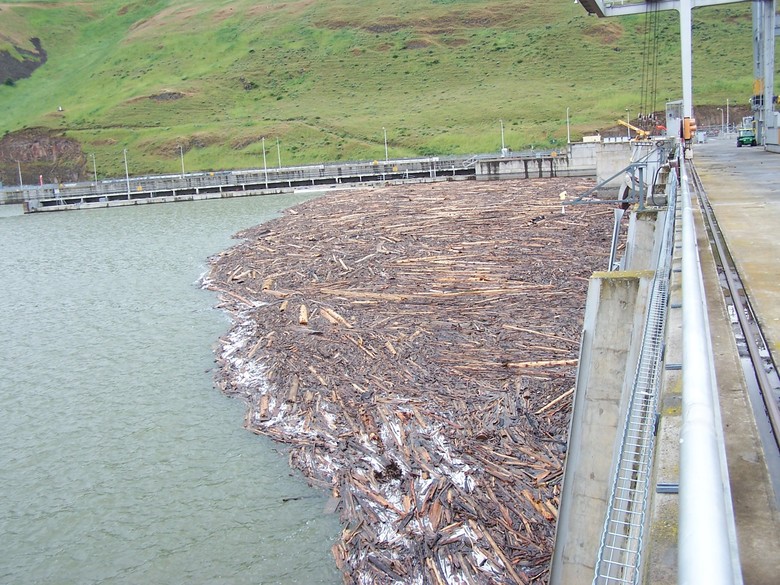Two Army Corps of Engineers employees at Little Goose Dam on the lower Snake River created a device that removed debris blockages within the dam.
Successfully clearing the debris eliminated the need to spend time and labor dewatering a gatewell, prevented fish mortality and boosted energy production, said the Corps.
Little Goose Lock and Dam dealt with numerous debris issues in recent years that adversely affected Endangered Species Act-listed salmon and steelhead along the Snake River.
In 2014, the trash shear boom (a barrier designed to keep debris, such as logs and trash, out of areas where it could create problems) failed and all debris moving downriver accumulated in the immediate forebay, directly upstream of the turbines.
“The high runoff years of 2017 and 2018 were extremely challenging for Little Goose staff, particularly staff at the Juvenile Fish Facility. High flow and increased debris caused numerous issues with fish passage through the juvenile bypass system,” Scott St John, Supervisory Fish Biologist at Little Goose, said.
— CBB, May 5, 2017, FISH LOSS AT LOWER SNAKE’S LITTLE GOOSE DAM CAUSED BY RIVER DEBRIS, HIGH FLOWS
These issues included plugs in the juvenile fish channel and vertical barrier screen failures, among others. Even with the installation of the new trash shear boom and boat barrier in 2018, debris continued to create issues in the juvenile bypass system.
Concerned with impacts to fish, Mechanical Engineering Technician Jay Haugen and Maintenance Worker Kreg Buryta combined their talents in 2019 to design and fabricate a tool that could be used to remove debris from orifices (openings) within the dam.
The design utilized a pneumatic cylinder left over from PIT tag gate maintenance and sections of scrap aluminum. Haugen took measurements and drew up the design, which was then given to Buryta for fabrication. Work Leader Ronald Ashley, who has since retired, Maintenance Worker Matthew Hutchens and Engineering Technician Matthew Flanagan also assisted with design, fabrication and testing.
On May 5, after many modifications and tests, Haugen and Buryta were able to successfully use the device, dubbed the “orifice debris plunger” to remove a very difficult blockage from an orifice in the dam, after hours of trying various other tools and methods.
“The orifice debris plunger is a valuable tool that reduces risk of injury, reduces forced outages of turbine units and related generation revenue and has the potential to prevent ESA listed fish mortality events.” St John said.

